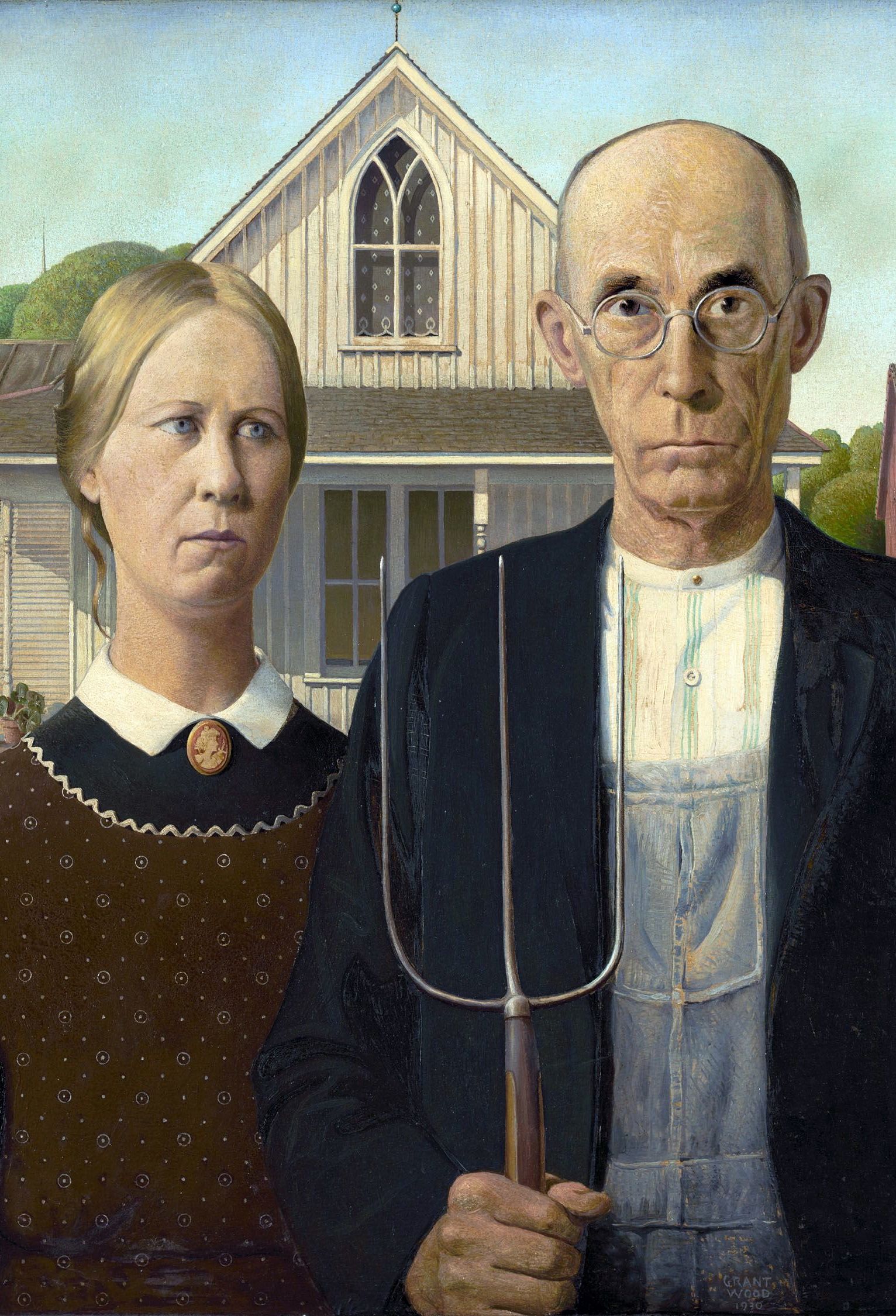- Vol. 03
- Chapter 04

American Gothic
They were made of stern stuff, the Flemish masters. No smiling in those portraits. Immortality was a serious thing. Everything was painted in the light of eternity, even lemons on a plate and still life studies of bread and cheese.
Grant Wood saw the rolling fields of the heartland, black dirt rich from retreating glaciers produced such plenty, too, before fields dried up in the dust bowl, and tears fell on bank foreclosures.
In the American galleries in the Art Institute of Chicago, you will find American Gothic, by Grant Wood. The man and woman stand together in that painting on the wall. You have seen it before. It is so familiar, you can't remember when you saw it for the first time. You have seen it, but not really seen it. It looks like an old painting, from the 1800s maybe, but it was painted in 1930. It is painted in the light of eternity and the Great Depression. There is a seriousness. These people stand their ground.
Today, people come to the museum from all over the world. "Where's the farmer?" they ask. It is one of the most frequently asked questions. They want to see the famous painting by Grant Wood. Everyone sees something different. They want to know what it means.
In the gift shop, there are many versions of this image – mugs and postcards, note cards, prints and posters. There are books on the art of Grant Good. Maybe the visitor will buy a postcard, or a magnet, a memento of this place, their visit to the city, gleaming by the lake. They will take the magnet home to Saint Louis or Paris. They will put it on their refrigerator, where it will secure a shopping list or a child's drawing – a house, and a family, with a cat and a dog.
